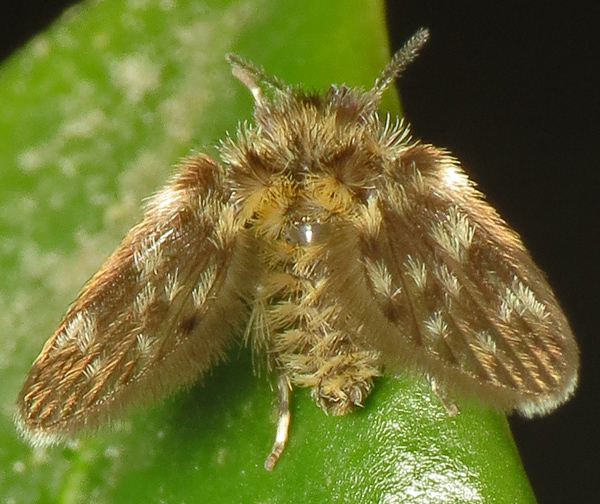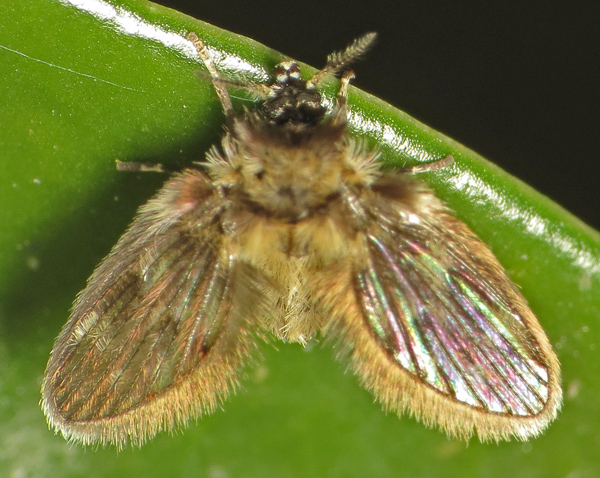Diptera.info :: Identification queries :: Diptera (adults)
|
Psychodidae for ID please => Pneumia nubila
|
|
| Martin Cooper |
Posted on 06-04-2014 09:01
|
|
Member Location: Ipswich, Suffolk Posts: 628 Joined: 01.05.12 |
About 5mm across, photographed on 27-Mar-2014 running about on the leaves of a plant in the garden here in Ipswich, Suffolk. Can it be identified? Regards, Martin Martin Cooper attached the following image:  [184.4Kb] Edited by Martin Cooper on 07-04-2014 08:42 |
|
|
|
| Martin Cooper |
Posted on 06-04-2014 09:02
|
|
Member Location: Ipswich, Suffolk Posts: 628 Joined: 01.05.12 |
.
Martin Cooper attached the following image:  [149.57Kb] |
|
|
|
| Martin Cooper |
Posted on 06-04-2014 09:02
|
|
Member Location: Ipswich, Suffolk Posts: 628 Joined: 01.05.12 |
.
Martin Cooper attached the following image:  [182.34Kb] |
|
|
|
| Martin Cooper |
Posted on 06-04-2014 09:03
|
|
Member Location: Ipswich, Suffolk Posts: 628 Joined: 01.05.12 |
.
Martin Cooper attached the following image:  [187.46Kb] |
|
|
|
| Martin Cooper |
Posted on 06-04-2014 09:04
|
|
Member Location: Ipswich, Suffolk Posts: 628 Joined: 01.05.12 |
.
Martin Cooper attached the following image:  [176.94Kb] |
|
|
|
| Gunnar M Kvifte |
Posted on 06-04-2014 10:07
|
|
Member Location: Kassel, Germany Posts: 436 Joined: 18.08.09 |
Pneumia nubila |
|
|
|
| Martin Cooper |
Posted on 06-04-2014 10:25
|
|
Member Location: Ipswich, Suffolk Posts: 628 Joined: 01.05.12 |
Thanks Gunnar. The tuft of facial hair is the key, isn't it? How certain can I be without the specimen when I record this species? Can you tell if it is male or female? Best wishes, Martin |
|
|
|
| Gunnar M Kvifte |
Posted on 06-04-2014 10:52
|
|
Member Location: Kassel, Germany Posts: 436 Joined: 18.08.09 |
It is a male, only males have the facial tufts. Apparently, many Pneumia males have a large hair tuft in their face; in P. nubila it is placed on an enlarged frontofacial protuberance. A similar, but smaller structure is present in P. trivialis. It is probably some sexual thing - psychodids use a combination of visual displays and pheromones in their courtship. I am fairly confident about the ID - the only species it can be confused with is P. trivialis, which is much less brown and much more grey. Still, I can't be 100% sure without a specimen... Edited by Gunnar M Kvifte on 06-04-2014 10:52 |
|
|
|
| Martin Cooper |
Posted on 06-04-2014 12:32
|
|
Member Location: Ipswich, Suffolk Posts: 628 Joined: 01.05.12 |
Looking at records for the UK, I can see Pericoma nubila and trivialis and Pneumia as a subgenus of Pericoma, but no Pneumia nubila or P trivialis. Another example of the confused Psychodid taxonomy I suppose... Am I right in thinking the key characteristic to separate nubila from trivialis would be a microscopic examination of the facial structures? Thanks again for your help. Martin |
|
|
|
| Gunnar M Kvifte |
Posted on 06-04-2014 16:06
|
|
Member Location: Kassel, Germany Posts: 436 Joined: 18.08.09 |
Pneumia was separated from Pericoma by Vaillant (1971), who called it Satchelliella. Morphological differences between the adults are slight, but the morphology and ecological requirements of the known larvae are quite distinct. It was Duckhouse (1990) who first suggested to treat it as a subgenus, but this has not been widely accepted. Pneumia is used as the genus name by all contemporary European specialists (maybe except for Phil Withers?). |
|
|
|
| Jump to Forum: |












